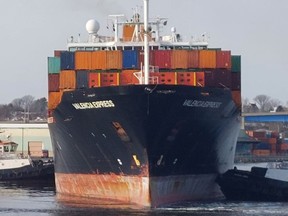Herb Emery: Our per-capita GDP has stalled. So what?
N.B. now no different from Nova Scotia, P.E.I. in terms of importance of international exports

Article content
New Brunswick’s GDP is not growing much, and it lags tepid growth in Nova Scotia and Prince Edward Island. The policy questions we need to answer are as follows: 1) So what? 2) Does an affluent New Brunswick need to grow GDP?
I am not sure why anyone would be surprised by our slow growth. New Brunswick used to lead the “turtle derby” in the Maritimes because it was the most trade-exposed province, relying on exports from traditional heavy industries. That engine of growth stalled after 2005, and has weakened to the point that New Brunswick is now no different from Nova Scotia and P.E.I. in terms of the importance of international exports.
With the loss of exports as an economic driver, the growth you do see is due to population growth. During COVID-19 we saw a surge of in-migration, largely from Toronto – and largely to Halifax, Moncton and Charlottetown. But the population growth didn’t do much to increase the size of the working-age population, suggesting that migration wasn’t for economic opportunities.
Through the research I have been conducting with my team at UNB in the Atlantic Institute for Policy Research, and working with colleagues in the New Brunswick Institute for Research Data and Training, we have learned a lot about the transition that has been underway in the New Brunswick economy. Where New Brunswickers up to 20 years ago had their economic well-being tied to manufacturing exports, that is no longer the case in 2024.
With 40 per cent of provincial government revenue coming from federal sources like equalization, and with the rise of remote work to go with interprovincial commuters – plus, aging populations reliant on pensions and other non-labour income – a larger share of the population does not associate its income with the growth of the provincial economy. To put this shift in perspective, provincial government spending is now 10 per cent of GDP, which is equal to what remains of our manufacturing sector.
If you live in the Moncton region, you are actually living in a high-growth economy that is likely coming from an urbanization process. (Indeed, our province’s near-term growth prospects may lie in convincing more in-migrants to choose Moncton over Halifax as a relocation destination.) Yet, the rest of the province is already returning to stagnation of the pre-COVID decade as population growth slows.
During COVID-19, when I was presenting on the challenges eroding the competitiveness of our exporters, I was mainly told that I was a “downer.” Critics of growth-oriented policy argued that GDP growth is unimportant at best, and at worst is bad for the climate and creates income inequality.
These critics have had their way in the region over the past half-decade or so. We have prioritized transfers and population growth over GDP growth, with the results to show for it. It’s a long way from the kind of industrial policy that led to NAFTA, the creation of
ACOA, and other place-based policies that aimed to create jobs and grow the economy.
Yet perhaps it’s not all bad. One thing that many in the region fail to recognize is that while a lower than average per-capita GDP makes us a “have less” province in Confederation, we are not poor like the pre-NAFTA Maritime region of old. While GDP growth stalled after 2008, per-capita consumption and high levels of import spending resulted in high levels of material consumption, beyond what we could pay for if we were dependent on the provincial economy to generate all of our income. Per-capita consumption spending did not slow its growth rate after 2008 like GDP, and average consumption spending in the Maritime provinces has converged to the national average.
So the weak growth of our provincial GDP isn’t an accident, but a policy choice. We have let incomes generated in other regions of Canada become an increasingly important source of economic well-being as our export engine slowed down. Given the high level of satisfaction in the region, why bother growing the provincial economy, which is hard work? To boot, it faces political headwinds from residents who prefer to see less of our traditional heavy industries and a larger role of the public sector for maintaining our economic well-being.
Of course no one wants to talk about the risk we have taken by relying on the rest of Canada to grow and sustain our standard of living. We have no influence over investment and other drivers of GDP growth in Ontario or Alberta, which generate the federal money transferred to our region – or the jobs that employ our remote workers and interprovincial commuters.
If those economies slow down, we will need to adjust our material standard of living to that which can be sustained by our own economy. When that time comes, we can debate if the resulting out-migration leading to negative GDP growth is a problem or a solution, but we should recognize that it was the result of policy choices we made.
Herb Emery is the Vaughan Chair of Regional Economics at the University of New Brunswick












Postmedia is committed to maintaining a lively but civil forum for discussion. Please keep comments relevant and respectful. Comments may take up to an hour to appear on the site. You will receive an email if there is a reply to your comment, an update to a thread you follow or if a user you follow comments. Visit our Community Guidelines for more information.